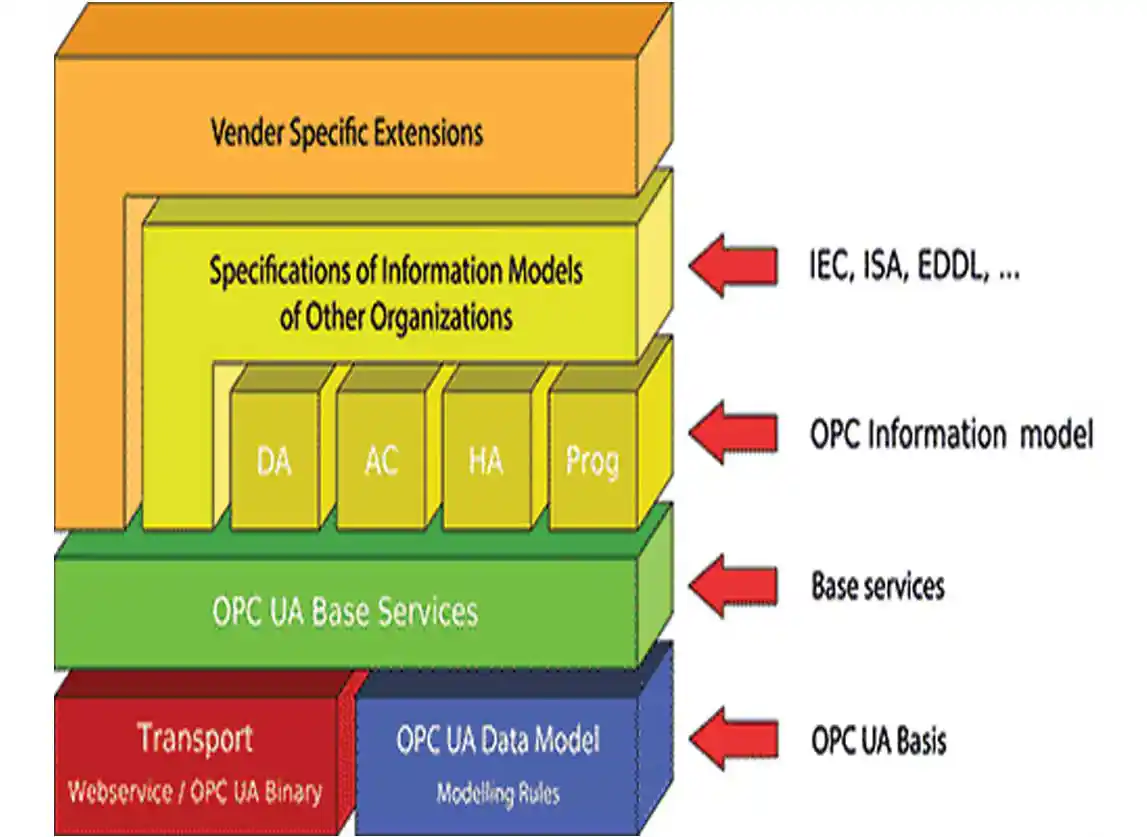OPC UA Standard
Open Platform Communications United Architecture
OPC UA standard or OLE (Object Linking and Embedding) for Process Control Unified Architecture is an open source standard for communication in industrial automation. The purpose of OPC UA is to connect higher-layer software systems with lower layers.
Higher-layer systems include HMI screens, SCADA or MES and ERP systems, while lower-layer systems are PLC and DCS. It is based on the TPC/IP protocol and combines OLE and DCOM technologies.
Compatibility and scalability

The OPC UA standard is a platform-independent architecture that was created due to the need for compatibility and scalability in various projects and applications. OPC UA, unlike OPC, is not based on Microsoft’s OLE and DCOM technology and is thus extensible to other platforms such as OS X, Linux (JAVA) and Android.
OPC UA is a secure and reliable standard that specifies communications between devices (M2M) and between the machines and the IT and OT system. It is based on the concept of client-server, where the server is an application that provides its data to other applications, and the client is an application that requires or obtains data. In practice, developers strive to make applications that are clients and servers at the same time.
Independent architecture OPC UA standard
OLE for Process Control Unified Architecture provides a Service Oriented Architecture (SOA) that is based on different logical levels.
All of the basic services are abstract method descriptions which are protocol independent.
They provide the basis for Unified Architecture (UA) functionality in the OPC standard.
The basic components of UA functionality are the transport mechanism and the architecture of the standard.
Read the latest Networking news
Secomea’s quest to cybersecurity superiority
A compliance of Secomea remote access solution with the NIS2 directive helps you establish a strong defence against cyberthreats.
Ultra-compact edge AI system AIE100A-ONX Axiomtek
Use the edge AI system with 5x greater performance for speeding up the implementation of deep learning capabilities into your IoT devices.
Fanless embedded system Axiomtek eBox710A
Durable eBox710A is perfect for AIoT applications that require robustness, flexibility and performance even in harsh industrial environments.
Secomea Solution 9.6 – now even better
Secomea solution 9.6 allows you to connect to remote devices on different subnets via Layer 2 protocols, enhancing connectivity and usability.
Support Arms and Control Panels by Teknokol
The new product line is distinguished by high quality, modern and ergonomic design. These properties ensure high safety and ease of use.
EAGLE40 the next generation industrial firewall
The Eagle40 is a versatile and robust industrial firewall from Hirschmann designed for high data flow and optimal cyber security.
Subscribe to our newsletter!













